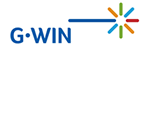Natural Food Grade Approaches to Replace Food Dyes and Pigments
Published Feb-04-10Breakthrough:
Multiple solutions to a food dye challenge to provide coloring agents as cost effective, vivid and stable as some synthetic dyes and pigments.
Company:
General Mills, United States
The Story:
 General Mills is a Fortune 500 corporation headquartered in Golden Valley, Minnesota that markets some of the world’s most popular brands including Yoplait, Pillsbury, Green Giant, Häagen-Dazs, and Cheerios. In recent years the company has been changing the way it invents and has followed the open innovation model to accelerate its innovation efforts.
General Mills is a Fortune 500 corporation headquartered in Golden Valley, Minnesota that markets some of the world’s most popular brands including Yoplait, Pillsbury, Green Giant, Häagen-Dazs, and Cheerios. In recent years the company has been changing the way it invents and has followed the open innovation model to accelerate its innovation efforts.Open Innovation Initiatives
To this end it launched the General Mills Worldwide Innovation Network (G-WIN) to tap into talent wherever it may be, “It starts with internal collaboration and includes working with trusted partners, suppliers, research institutes and people we’re currently doing work with, and reaching out to new partners,” said Jeff Bellairs, director of G-WIN. “So whether that’s people in the food industry or people in other industries we want to have a program that is comprehensive to make sure we’re tapping into talent wherever it may be."
A recent addition to its open innovation portfolio (General Mills prefers the term “connected innovation”) has been the G-WIN innovation portal that lists details on nearly 50 technical challenges that the company is looking to solve. “Our intent has been to get the word out that General Mills is serious about connected innovation. The thing that is novel about the website is that we now articulate some of our key needs and so people have a much better idea of the technologies and ingredients and new processes we’re looking for. So we’re still open for serendipity but we want to shift the balance so that more of the responses we are getting are relevant to our critical business needs.”
Change Catalyst
The catalyst for the company’s change came in late 2004/early 2005 when Peter Erickson, senior vice president of Innovation, Technology and Quality at General Mills studied the company’s track record of innovation to look at what was required to be even more successful in delivering a constant stream of innovation.
It was felt that open innovation would lead to bigger ideas, and help the company find quicker ways of getting products into the hands of consumers. To do that they needed to find a way to leverage the expertise of smart people outside General Mills.
The new innovation portal has been a resounding success with Bellairs claiming that there are now a number of items in the pipeline that are making their way through the system directly as a result of open innovation.
Food Coloring Challenge
One of their recent challenges was focused on natural colors. Most are not as cost effective or stable as FD&C colors (synthetic pigments and dyes) and according to the challenge remit some natural colors also contribute undesirable flavors. So General Mills was looking for coloring agents with similar costs, stability and color intensity as some types of additives.
They already knew of three potential answers, but these were deemed unsuitable. However, help was at hand through the open innovation portal. “Through G-WIN website we’ve uncovered 12 additional answers to that problem,” adds Bellairs. “We’re still in the process of looking at them, to see what is going to work in our food system and within the regulatory system here in the United States and markets where we might use it.”
Ask the Right Questions
According to Bellairs the key to getting the answers they want is to be specific about the challenges they post. It is an art form as much as it is a skill. “If you are too specific your universe of potential solvers goes down dramatically and you might hear from nobody, and if you’re too broad then you’ll be swamped with people who think they have a potential solution. We try and target things so that we’ll perhaps hear from 15-20 people, but candidly, we’re still experimenting with the right level of scope and definition of some of these challenges.”
Next Story »
